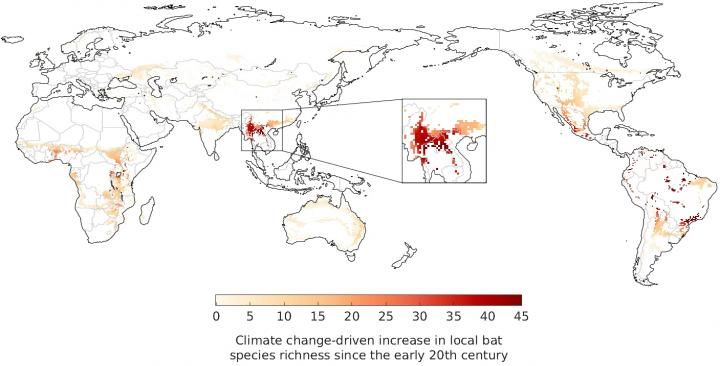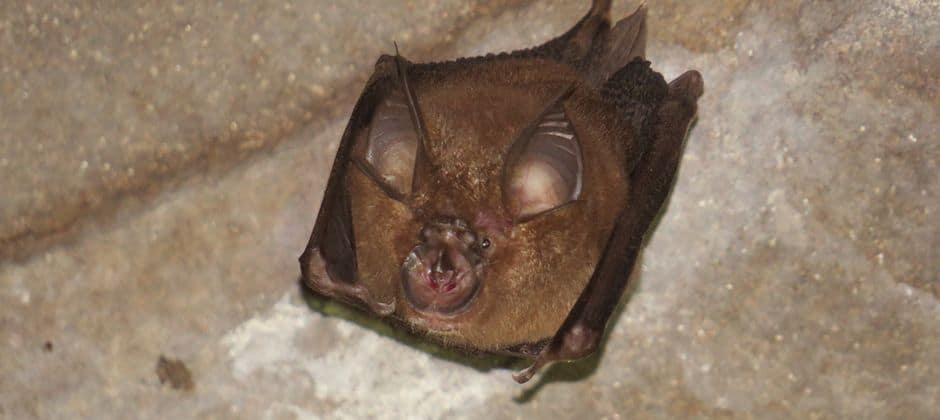Share this article
Is climate change linked to COVID-19 outbreak?
A changing climate has pushed more species of bats into new areas, where they may be more likely to share viruses like the one that causes COVID-19 in humans, researchers found.
“We started the study when there was first evidence for bats being the original carriers of SARS-CoV-2, the virus that causes coronavirus, about a year ago now,” said Robert Beyer, a research fellow at the Potsdam Institute for Climate Impact Research in Germany. “Since then, this has been a fast-moving field of research, but the notion that bats were the original carriers of the virus is still the most widely accepted one.”
At the same time, Beyer and his colleagues were studying how climate change is changing geographical ranges of species, and they wondered if bats were changing their ranges, providing new opportunities of transmitting the viruses they carry to other host species, like pangolins.
One obstacle though, was that the team didn’t have empirical records of where bats ranged in the past to find out if their ranges have shifted. So the researchers led a study published in Science of the Total Environment, in which they reconstructed bat ranges in simulation models using climatic records. These are the same models Beyer and his colleagues used in past research in which they found that land use change and climate are restricting wildlife ranges.
Beyer and his team input where bats are roughly found and the vegetation they require for suitable habitat into the models. Adding climate change into the model, they created worldwide maps of bat distribution from the last century as well as today. “Based on that, we could look at a certain area of the world, and see if it was suitable in the past or if it’s suitable today,” he said.

This map shows the estimated increase in bat species due to shifts in their ranges driven by climate change.
Credit: Dr. Robert Beyer
Their simulations showed that there are a few areas in the world where bats have expanded their ranges. Those major hotspots ended up being southern China and neighboring areas in Myanmar and Laos. “That’s exactly where current genetic evidence suggests that the bat-borne ancestor of SARS-CoV-2 originated,” he said. In that region, there has been an increase of about 40 species of bats over the past century, with each bat carrying an average 2.7 coronaviruses. That makes sense as increases in temperature and sunlight have changed natural habitats of tropical shrubland to more tropical savannah and deciduous woodland that bats prefer.
The problem with climate change is that any mitigation measures are mostly long term. “In the short term, there’s very little you can do on the climate side to stop these processes,” he said.
But Beyer said climate is just one factor increasing the risk of disease spread. Land use change and hunting species that are potential carriers of pathogens are two of the main drivers of disease spread. “These practices could in principle be stopped immediately,” he said.
Header Image: Researchers believe the intermediate horseshoe bat (Rhinolophus affinis) may have been the original carrier of the novel coronavirus. Credit: yvesbas via iNaturalist








